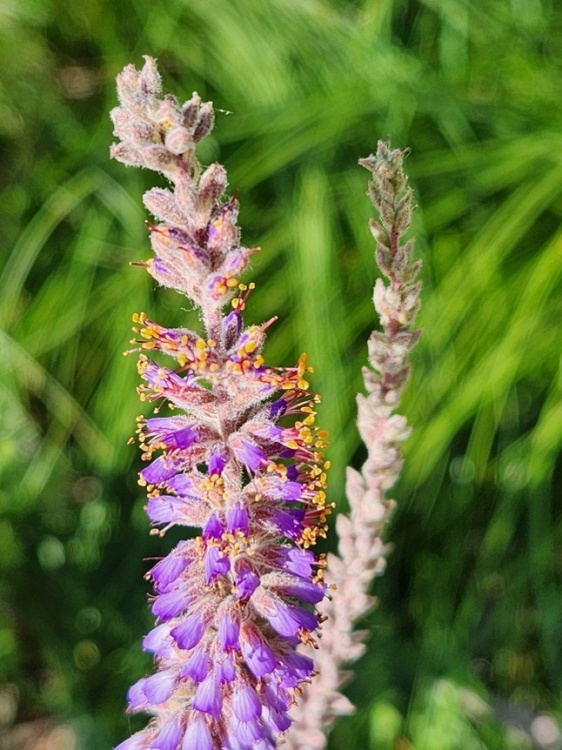Plant of the Week: Lead Plant
posted
Lead plant is a low, bushy perennial shrub that’s native to North American prairies.
It usually reaches only 1–3 feet in height, but its deep, woody roots can extend more than 10 feet into the soil, which makes it extremely drought-tolerant. These extensive, tough roots are why early settlers dubbed this shrub “Devil’s shoestrings” as attempts to plow up prairies for agricultural use caused quite a bit of frustration. Lead plant’s shimmery leaves lend it a silvery-grey hue which may explain its current common name.
In early to mid-summer, it produces striking spikes of purple flowers tipped with bright orange stamens. This plant is host to the Lead Plant Moth, whose wings mimic these blooms so effectively they are nearly invisible as they cling to the flowering spikes.

Because it’s a member of the legume family, lead plant works with soil bacteria to fix atmospheric nitrogen, improving the soil around it and supporting neighboring plants. Its flowers attract a wide range of pollinators, especially native bees and butterflies, and its seeds and foliage provide food for insects and some wildlife. Historically, native tribes and, later in time, pioneers brewed the leaves as a tea and used the plant medicinally. Today, it’s valued in prairie restorations and erosion-control plantings because of its resilience and deep roots and recompensating the earth. Lead plant is truly a fantastic prairie staple
This content is free for use with credit to City of Madison Engineering.
